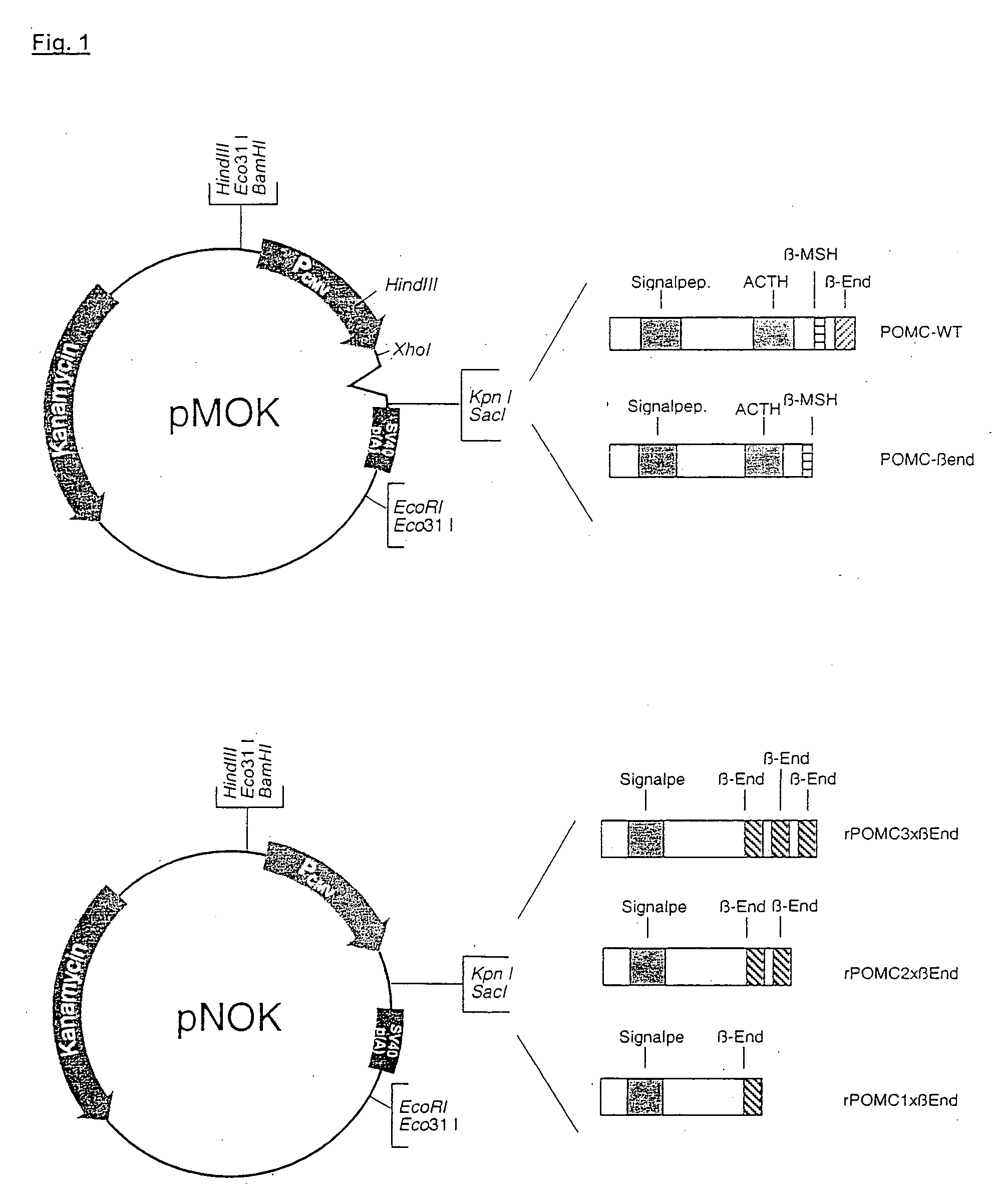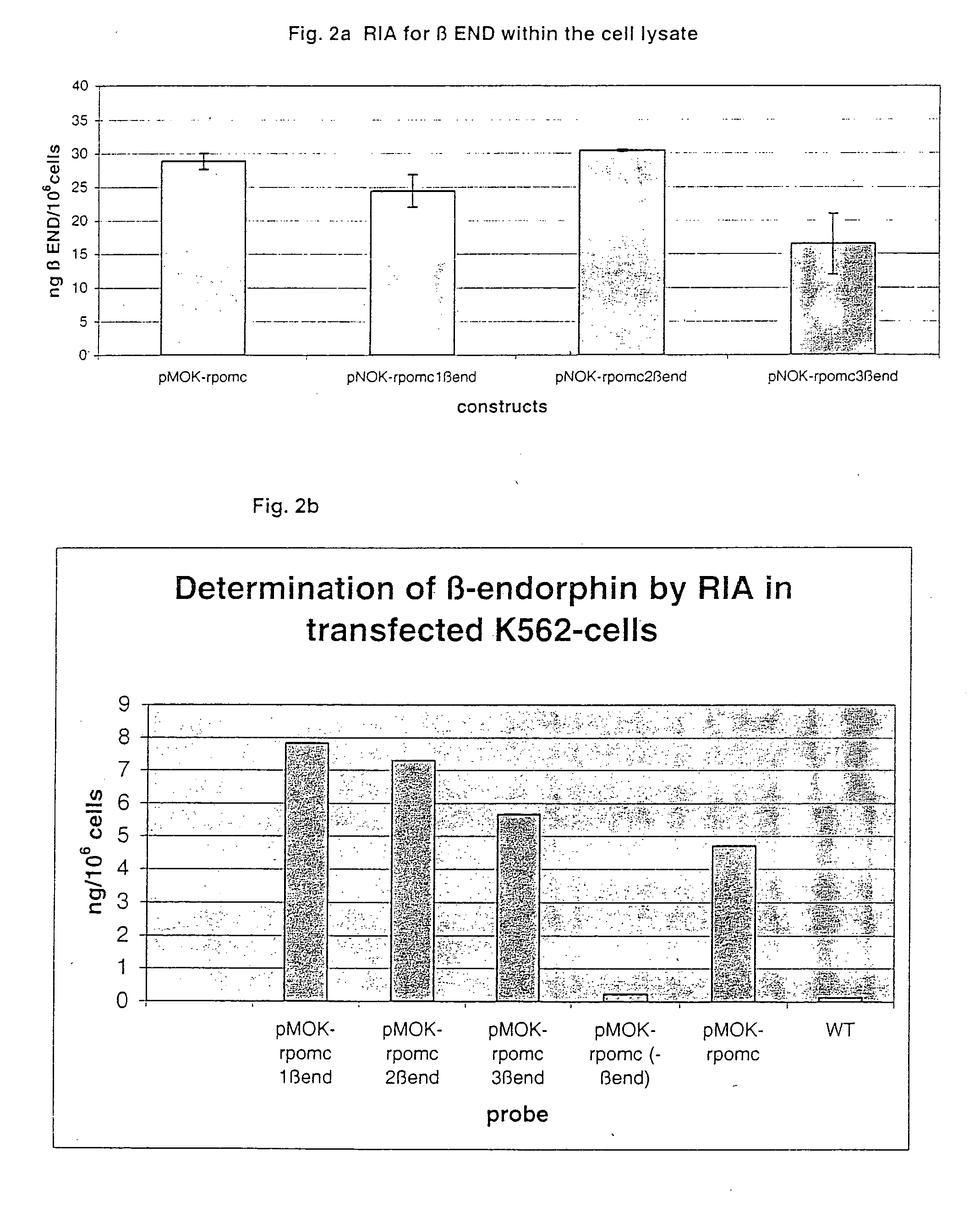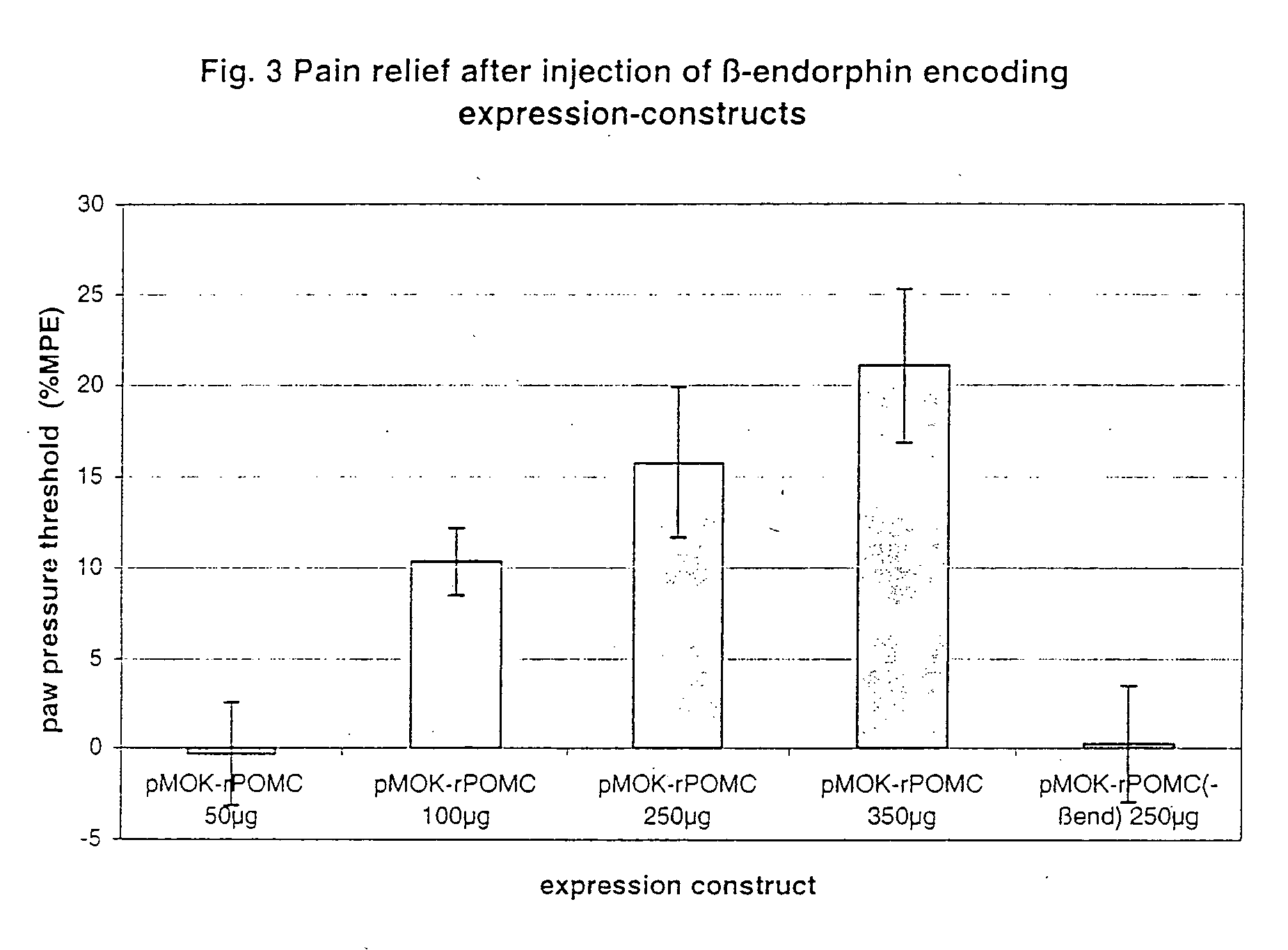Local pain-combating agent
a local pain and agent technology, applied in the field of local paincombating agent, can solve the problems of unsuitable experiments, high cost, and significant increase in the probability of gastrointestinal problems in nsaid-treated patients
- Summary
- Abstract
- Description
- Claims
- Application Information
AI Technical Summary
Benefits of technology
Problems solved by technology
Method used
Image
Examples
example 1.2
Cloning of rPOMC-.beta.-END
[0095] The plasmid pMOK-rPOMC served the template for the cloning of POMC-.beta.-END. A fragment was amplified by PCR, which was truncated and lacked the sequence encoding .beta.-END. The stop codon for the novel sequence was introduced in the course of the PCR reaction (the stop codon is marked in fat type in the right primer). The following primers were employed:
[0096] left primer:
[0097] 5'-AATTATGGTACCATGCCGAGATTCTGCTACAG
[0098] right primer:
[0099] 5'-ATTATGAGCTCTCAGCGCTTGTCCTTGGGCGGGTTG.
[0100] After purification of the PCR product and restriction digestion with KpnI and SacI, the fragment was inserted into the vector pMOK. Clones were analyzed by restriction digest and clones of expected fragment length were confirmed by sequence analysis. The sequence is given in Seq. ID 4 (rPOMC-.beta.-END).
example 1.3
Cloning of rPOMC 1.times..beta.-END
[0101] The plasmid pMOK-rPOMC served the template for the cloning of POMC 1.times..beta.-END. The artificial gene construct is composed of the nucleotides of the POMC sequence until the last codon in front of the start of the ACTH sequence and the .beta.-END sequence. For the joining of the gene sequence, two PCR reactions were necessary. The following primers were employed:
[0102] Fragment 1:
[0103] left primer:
[0104] 5'-AATTATGGTACCATGCCGAGATTCTGCTACAG
[0105] right primer:
[0106] 5'-ATTATTGAGCTCTAGAAGACATGCGCTTGCCCTCCCGTGGA
[0107] Fragment 2:
[0108] left primer:
[0109] 5 '-AATTATGGTCTCTGCGCTACGGCGGCTTCATGACCTC
[0110] right primer:
[0111] 5'-AATTATGAGCTCTGAAGACATGCGCTTCTGGCCCTTCTTGTGCACGTTC
[0112] After amplification of the first fragment by PCR and subsequent purification, the fragment was digested by KpnI and SadI and inserted into the vector pMOK. Correct clones were identified by restriction digestion and confirmed by sequence analysis. The resulting pl...
example 1.4
Cloning of rPOMC 3.times..beta.-END
[0113] rPOMC also served as the template for the cloning of POMC 3.times..beta.-END. In comparison to fragment 2 of example 1.3, the sequence did not contain a stop codon at the end of the .beta.-END sequence. The intermediate product and the fragment of example 1.3 could be employed here. The following primers were used for the amplification of fragment 3:
[0114] Fragment 3:
[0115] left primer:
[0116] 5'-AATTATGGTCTCTGCGCTACGGCGGCTTCATGACCTC
[0117] right primer:
[0118] 5 '-TTCTCAGAGCTCTCACTGGCCCTTCTTGTGCACGTTCTTGATG.
[0119] After purification, fragment 3 was digested with Eco31I and SacI, and inserted into the intermediate product that had been digested with BbsI and SacI. The resulting intermediate product 2 was also digested with BbsI and SacI, and fragment 3 was inserted once more into the intermediate product 2. Intermediate product 3 was digested once more with BbsI and SacI and the fragment 2 from example 1.3 (this fragment contains the stop codon...
PUM
| Property | Measurement | Unit |
|---|---|---|
| pH | aaaaa | aaaaa |
| pH | aaaaa | aaaaa |
| length | aaaaa | aaaaa |
Abstract
Description
Claims
Application Information
 Login to View More
Login to View More - R&D
- Intellectual Property
- Life Sciences
- Materials
- Tech Scout
- Unparalleled Data Quality
- Higher Quality Content
- 60% Fewer Hallucinations
Browse by: Latest US Patents, China's latest patents, Technical Efficacy Thesaurus, Application Domain, Technology Topic, Popular Technical Reports.
© 2025 PatSnap. All rights reserved.Legal|Privacy policy|Modern Slavery Act Transparency Statement|Sitemap|About US| Contact US: help@patsnap.com



